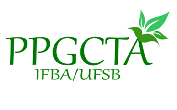Banca de QUALIFICAÇÃO: LETICIA ROSARIO SILVEIRA
Uma banca de QUALIFICAÇÃO de MESTRADO foi cadastrada pelo programa.STUDENT : LETICIA ROSARIO SILVEIRA
DATE: 20/09/2024
TIME: 09:00
LOCAL: Sala Mata Medonha
TITLE:
Quality assessment of honey from Apis mellifera: a review of the physicochemical parameters, composition, and adulteration
KEY WORDS:
Adulteration; honey; environmental indicator; mineral elements
PAGES: 48
BIG AREA: Ciências Agrárias
AREA: Ciência e Tecnologia de Alimentos
SUBÁREA: Ciência de Alimentos
SPECIALTY: Valor Nutritivo de Alimentos
SUMMARY:
Honey is a highly nutritious food, made from the nectar of flowers or sugary secretions released by plants. These substances, when collected by bees, undergo enzymatic transformations and are taken to the honeycomb cells for maturation. Honey is composed of vitamins, minerals, and phenolic compounds, standing out for its nutritional, therapeutic, and medicinal properties, such as antioxidant, anti-inflammatory, and antimicrobial actions. The composition of honey can vary according to the floral source and environmental conditions, which can also introduce inorganic contaminants from anthropogenic activities in the foraging areas of bees. With the growing interest in honey as an organic product, practices of adulteration arise, driven by the market and profit, compromising its quality. Beekeeping in Brazil, besides being a sustainable practice, is an important source of income for family farming. This work proposes a bibliographic survey that covers the composition and classification of honey, its nutritional importance, its role in family farming and beekeeping associations, and its relevance as an indicator of environmental quality.
COMMITTEE MEMBERS:
Interno - ***.287.925-** - ALLISON GONÇALVES SILVA - IFBA
Externa à Instituição - ARIANA MARIA DOS SANTOS LIMA - IFBA
Externo ao Programa - 1782304 - JAILSON SANTOS DE NOVAIS - nullPresidente - 3044886 - MARIO MARQUES DA SILVA JUNIOR



